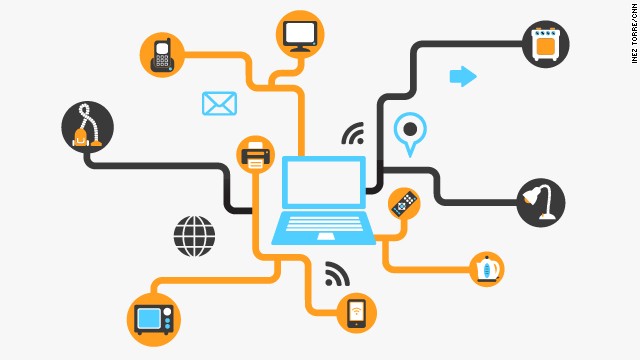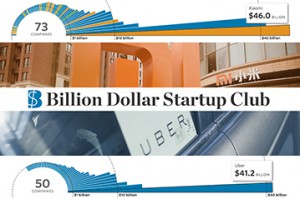Disruptive IoT Innovation

In this UX Magazine article, author Avi Itzkovitch disucusses how the Internet of Things can be used to create disruptive innovations. The main point of this article talks about how connecting a device or sensors to a network is just not enough to create a new disruptive technology, but how we use the connection to our advantage to disrupt current technologies. One example he uses is under his titled section “A Lock on Added Value”. There are already technologies that allow a user to unlock one’s front door via smartphone. However, he talks about a company called August Smart Lock who added an extra functionality to their smart lock that allows the user to share a virtual key to household members or other houseguests who are visiting your home. This gives the smart lock an added value by providing a virtual network around monitoring and providing access to your house. Now this idea certainly seems to have its flaws, but it is a creative idea that could disrupt the old technology that has secured our houses for hunsdreds of years. He also states a few other examples in the article of how utilizing connected devices can disrupt current product markets. Can you think of any examples of how using already exisitng technologies that have the ability to connect to a network can disrupt current markets?
Color’s attempt to tackle at-home cancer testing on the cheap
In this article by Kara Swisher of Re/code, Color, a new at-home breast and ovarian cancer-risk screening company, is at the center of attention. The company produces $249 physician-ordered kits that screen genes that may show early mutations that lead to breast or ovarian cancers. In short, a woman orders a kit, a licensed physician reviews the order and dispatches the kit to the person’s home, a saliva sample is collected and the results are posted to a secure online portal after processing for the woman to review. The company even offers free genetic counseling so the user can better understand what the results mean. Swisher discusses how the company recently secured $15 million in funding for its venture and how the funds aim to boost Color’s growth and get the kits in the hands of more women. I think this is an awesome–and affordable–idea. I also think “minute clinics” and family doctors are going to be disrupted by this new innovation. Because women can order the kit and get the test right in their home, it takes the doctor “middleman” out of the equation, making the entire process less painful. Additionally, because this kit tests genetics, something that isn’t usually done in a doctor’s office or clinic, there is opportunity for a more robust and holistic view of the user’s health–ultimately and hopefully helping them avoid cancer altogether. I think there might be a security risk (someday) with sending genetic information through the mail, having it posted online, etc.–but when you think about it, I’m not sure there is any real value in someone stealing your cancer-risk data. So, for now, I see that as a non-issue. What do you think? Do the benefits outweigh the risks? Would you buy one of the kits?
Integrative Thinking

In this article entitled Integrative Thinking, author Graham Douglas explores the differences between critical thinking and integrative thinking and addresses how we are programmed to think critically because of our education and gives us tips about ways of breaking that hard coding. He begins by talking about how our education conditioned us to fix problems by breaking the problem down into parts, look for past data about the parts, analyze trends for the data, and settle on a course for action. He discusses how this gives us a disadvantage in our lives and work. He then discusses the steps to integrative thinking and gives us tips on how to become integrative thinkers. These tips include:
1. Memorize some general categories to help trigger connections in your mind; for example, people, market, product, money, physical, social and cultural environment.
2. Think integratively more often so you habitually make connections to create a whole new picture rather than habitually break down an old picture into its parts and put it together again with a “facelift.”
3 Wonder, from many angles, about what you have and what you want. Problem solving is simply the negotiating of change from what you have to what you want.
4. Create a sensible narrative connecting your wonderings.
5. Manage your experiences in acting out the narrative.
Would you agree with Douglas when he says that our way of thinking has been manipulated by the education we receive? Do you believe that every person has the potential to become an integrative thinker?
Nailing the group presentation
 In this article by Mark Suster, an entrepreneur, tips on how to “not suck” at presenting to a group/large audience are discussed. A few of the points stood out to me and I think they really apply for our final presentations on May 4.
In this article by Mark Suster, an entrepreneur, tips on how to “not suck” at presenting to a group/large audience are discussed. A few of the points stood out to me and I think they really apply for our final presentations on May 4.
- “Show some energy!” Mark encourages presenters to jump boldly out of their comfort zones–as everyone in the audience has a mobile device or laptop just waiting to be used if attention is lost. He makes the point that it’s really important to project, use hand motions and “interact” with the audience in a “loud, evocative and compelling” way.
- “Tell a story.” Mark encourages presenters to tell a story if a demo is used in their “pitch” to the audience. Rather than highlighting points like how users input data or sign up for the platform, Mark encourages presenters to tell a story about how the app/demo is applicable in real life. I think this is key for our presentations, as we’re all trying to convince a large, diverse group that our app can add value to their lives.
- “Make it visual.” Mark discusses how he usually creates two decks when giving a presentation: 1 with high-level stats and lots of valuable pictures/graphs/charts/etc. and 1 full of the “meat” that he sends to his audience after a presentation. I think this is similar to what we’re doing with our presentations– 1 “pretty” deck that covers high-level information about our projects, and a community site where we post all of the “nitty gritty” details for viewing after the presentation. I think this is the best practice because it gives people the general idea of what you’re talking about without making them “think” too much–and gives them the ability to investigate further if they’re so inclined. And that’s key.
Do you agree with Mark’s points? I do. I think they’re pretty much “common sense” things that everybody knows–but many of us rarely practice them in our actual presentations due to nerves, grades, etc. Is there anything you’d add beyond what Mark discusses?
What Makes an Integrative Thinker a Successful Leader?
The main focus of this article is to deconstruct and describe a capability that comes naturally to successful leaders. Roger Martin discovers that most leaders share an unusual trait. “They have the predisposition and the capacity to hold in their heads two opposing ideas at once. And then, without panicking or simply settling for one alternative or the other, they’re able to creatively resolve the tension between those two ideas by generating a new one that contains elements of the others but is superior to both.” This is the process of consideration and synthesis, integrative thinking, that we talked about in class. Great integrative thinkers tend to be rare because people don’t really exercise this capability. Martin then explains that this type of work makes most people anxious. Most people tend to avoid complex and ambiguous problems. Most people seek out the comfort of simple and clear issues. People’s first impulse is to determine which of the two models is right and wrong, and sides may even be taken to justify their decision. People must resist their natural leaning toward simplicity and certainty to take advantage of the opposable mind. Martin says that it more of discipline rather than strategy. He then states “not every good leader exhibits this capability, nor is it the sole source of success for those who do.” But he does believe that integrative thinking greatly improves people’s odds of becoming a great leader. Martin finally discusses how an integrative thinker’s approach differs from a conventional thinker’s approach in the four stages of decision-making salience, causality, sequencing, and resolution. The conventional thinker would rather accept the world just as it is while the Integrative thinker welcomes the challenge of shaping the world for the better.
Can you become an integrative thinker?
Is this skill being taught in any of your classes?
Have you been exposed to this skill outside of your classes?
Five Apps bringing billions of people online around the world.
Five Apps Bringing the Next Billion People Online – Digits – WSJ
This short article gives us in-site in some new emerging markets around the world. Seeing that there will still be 4 billion people in 2017 still offline should really get everything thinking how we could take advantage of this huge market place. If we do not then I fear this huge market will be a problem for us. As Arran’s article stats “The most disruptive technology is the internet.” This disruptive innovation is something that should be a concern to us as graduates. One ramification of this global disruption is loss of job security.
How does everyone view this “Bringing the Next Billion People Online?”
Following the bulls to the bubble?
The billion dollar start up club.
I found this interesting graphic on the Wall Street Journal that got me thinking about start up funding today.
The start up boom is still in full swing and it seems like every time we turn around we are introduced to another billion dollar plus start up. Which begs the questions, are we on our way to the next bubble? Is Uber (valued at $41.2 billion) really worth more then Sony? Is Snapchat, a company that is still not sure how it’s going to make money really worth $15 billion? Are the venture capitalists brilliant or insane?
I don’t believe anyone is sure of the answers to these questions and with so much money on the line it is a safe bet that an army of people are out there somewhere doing the due diligence before handing out capital. I understand that money isn’t just being slung at everyone with a latte and an idea. Indeed start ups are on average getting older and more mature before they head out for a cycle of funding.Yet despite that the spiraling increases in valuation are worrying, they must reach a ceiling at some point. As venture capitalist are still bullish on start ups though its hard to tell if we are in sight of the ceiling yet or still far away.
Here is the article. Are we in the bubble?
Most Disruptive Technology Over the Next 5 Years
In this TIME.com article, author Tim Bajarin explains that the most disruptive technology that we will experience over the next five years is not a new technology. The most disruptive technology is the Internet. He begins to talk about how the Internet will have massive disruptive global implications. He bases his argument on the fact that when you are connected to the internet, you have access to information. He then talks about how smartphone sales are projected to be about 1.5 billion in 2015 and nearly every cell phone will be a smart phone by 2018. At the same time, new wireless infrastructure being built in developing countries and the decreasing costs of cell phones will give more people access to the Internet and that this could result in major political, economical and educational ramifications. Can you think of any examples of disruptions/ramifications that can be caused in developing countries or countries with oppressive governments?
Disruptive Innovation and Education

Disruptive Innovation and Education
In this Forbes article, author Michael Horn talks about his interaction with Clay Christensen and how they used disruptive innovation to suggest ways for public schools to innovate. Horn states that the education system that we have today is, in many ways, built as a sorting system. “Those students who can’t keep up with the pace are sorted out at various intervals – an arrangement that worked fine for many in the past, but in today’s knowledge economy is no longer OK.” Horn suggested that online education is a way for public schools to cater to the individual needs that each student has instead of treating them all as if they are exactly the same. Horn also states that online education could also disrupt higher education. He states that it could severely affect some institutes a lot more than others but the ones that aren’t affected that much could adopt it as sustained innovation. Do you think that online education is more disruptive towards k-12 learning or higher education? Do you think that this could be the future of learning? Will it affect any other industries?
Look out Verizon and AT&T– there’s a new kid in town.
For years, there have been rumors of a brand new wireless carrier jumping into the ring currently occupied by the “Big 4” (Verizon, AT&T, T-Mobile and Sprint) in the United States–and according to this post by The Wall Street Journal, Google will finally confirm that it’s throwing its hat into the ring as early as tomorrow. According to the article, Google has “teamed up” with Sprint and T-Mobile to give its Nexus 6 users (initially) the choice of using Google as their carrier, rather than one of the “Big 4.” By doing so, Google will only charge customers for the data they use per month, as the average American leaves around $28 of unused data on the table each month in the current environment. I think this is a great move for Google, and gives customers more choice when choosing a wireless carrier that offers the most value for them. Because of the Nexus 6’s hardware, it can switch between the T-Mobile GSM network and the Sprint CDMA network (and both carrier’s 4G LTE networks) to give users the best coverage possible wherever they go. I think the key takeaway is that Google is trying to make data connectivity and Internet access more efficient, cheaper, and more accessible to more people–and that’s a good thing. While I think it’s obvious that Verizon and AT&T are the target for this initiative and will probably be disrupted, I also think cable providers like CenturyLink, Verizon FiOS and Time Warner Cable will also be affected. If mobile data continues to get cheaper and cheaper, people may rely less on their home-based internet connections to connect to the web, or they may drop cable TV completely in order to stream on the go with their cell-tower-connected devices. Are there other industries that might be disrupted? Would you switch to Google if you had a Nexus 6–or if they eventually made the service available to iPhones and other non-Nexus 6 devices?







Recent Comments